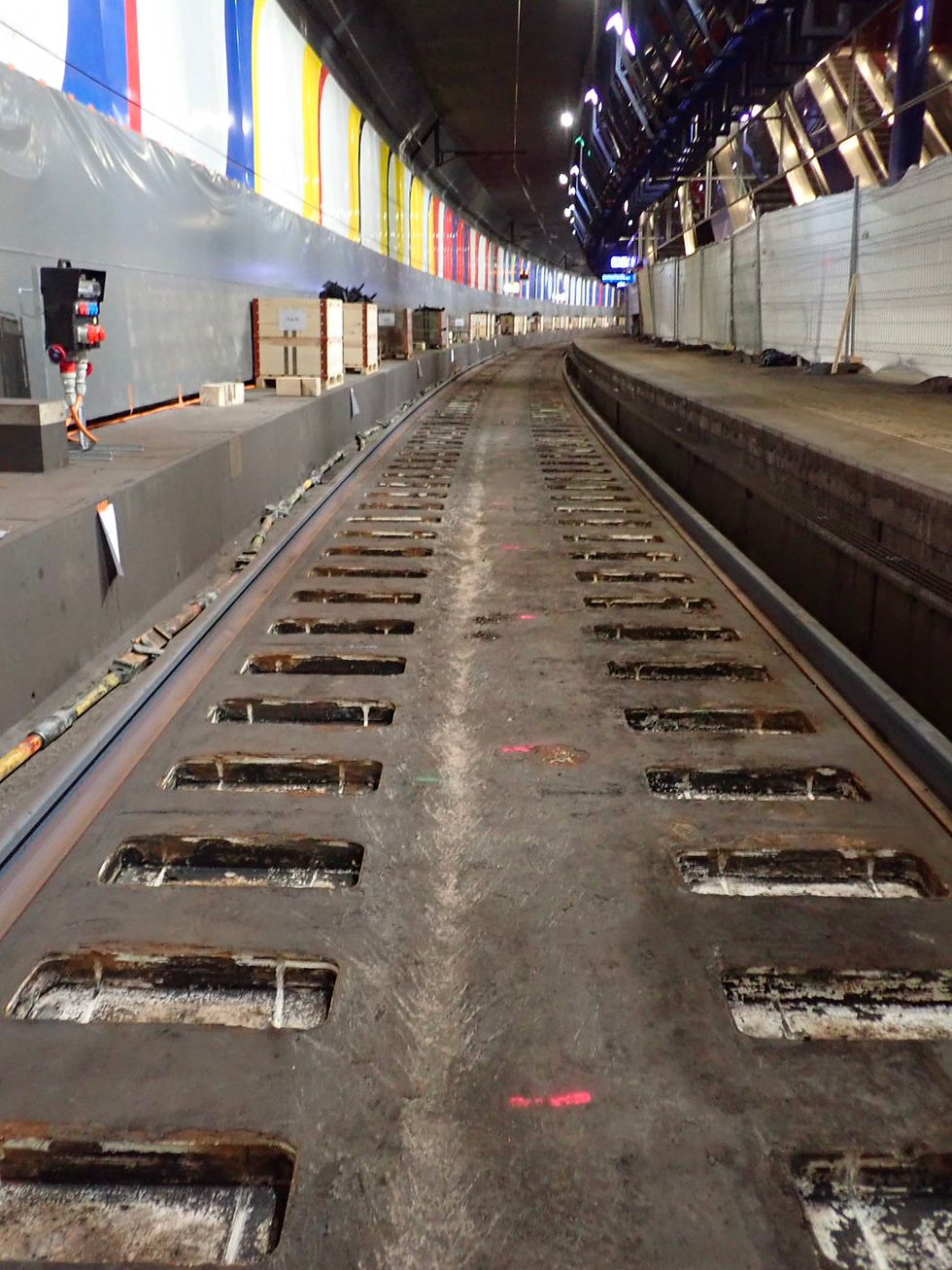Ballastless tracks without reinforcement: three pros and one con
- Raffael Hirt
- Apr 1, 2022
- 3 min read
Updated: Oct 7, 2022
The construction of slab tracks without reinforcement was standardised in 2017. RUBI Railtec and Pernstich Engineers are part of a pioneering project in Israel.

Ballastless tracks are on the rise. More and more railway infrastructure operators prefer the higher investments to the intensive maintenance of ballasted tracks. At SBB, the principle of "slab track on solid surfaces" seems to be gaining acceptance—ballast is no longer used in tunnels, on overpasses and in underpasses.
In addition, SBB renovated its oldest slab track in the Heitersberg tunnel from 2013 to 2016 (see the press release in German). This involved replacing rails, sleeper blocks, inserts and rubber shoes. Apart from maintenance and renewal of the rails, this was the first work on the track since the tunnel was commissioned in 1975. The concrete slab was in good condition, which confirms the longevity of the system.

For light-rail vehicles and trams, ballastless tracks have always been standard. Because the concrete slab forms part of the road surface, it is usually reinforced.
Since 2017, the standard EN 16432 (parts 1 to 3 and others) regulates the use of slab tracks without reinforcement in all environments. Together with the extensive experience of RUBI Railtec and Pernstich Engineers with slab tracks, the new standard was another reason why we proposed a ballastless track without reinforcement for the Green Line project in Jerusalem. There were essentially three arguments that convinced the client.

Toodle-oo, CO2
Unfortunately, concrete is still far from being CO2-neutral. But its production is less polluting than that of structural steel. That is why the project modification with the renunciation of structural steel in the Jerusalem project is a measure for climate protection and sustainability.

Structurally better in almost all respects
Slab tracks are masterpieces of precision. Ballasted tracks can be tamped into the correct position. With slab tracks, on the other hand, the track position—while not set in stone—is cast in concrete. That's why the sleeper blocks are placed with an accuracy of fractions of a millimetre before pouring.

Reinforcing bars are an additional variable in this process. If a track can do without them, construction is simpler and faster. This has a direct effect on costs and reduces the susceptibility to errors.
Made to last
Slab tracks of all kinds are made to last a century. If wear components such as rails, sleepers and fasteners are replaced in good time, the concrete slab is extremely durable.

Concrete without reinforcement is more durable. This is essentially due to the corrosion of the reinforcement bars. The so-called creepage current—the dissipation via rebars—causes the reinforcement of slab tracks to rust even more than usual.
Exposed to the weather
An important aspect in the design of unreinforced slab tracks are the weather conditions. In summer, the centre of the slab warps due to warmer temperatures on its surface. In winter, on the other hand, the colder surface causes "cupping", i.e. a slight lifting of the slab corners. The mitigation of these effects—in combination with the micro-crack formation in the slab and the acting traffic loads—had to be proven for the Israeli project.

On the Green Line, the temperature effect is minimised by dilatation joints both longitudinally and transversely to the direction of travel. Their spacing and size must be adapted to local conditions so that no cracks appear in the concrete.
There is also a risk of cracks when inlets are left empty—for example to install masts later on or to provide drainage. That is why the edges of inlets are locally reinforced.
We at RUBI Railtec and Pernstich Engineers are convinced that if local conditions are taken into account, nothing stands in the way of the worldwide use of fixed tracks without reinforcement. For projects like the Green Line, we rely on the know-how of local construction companies for execution in the required quality.


Comentários